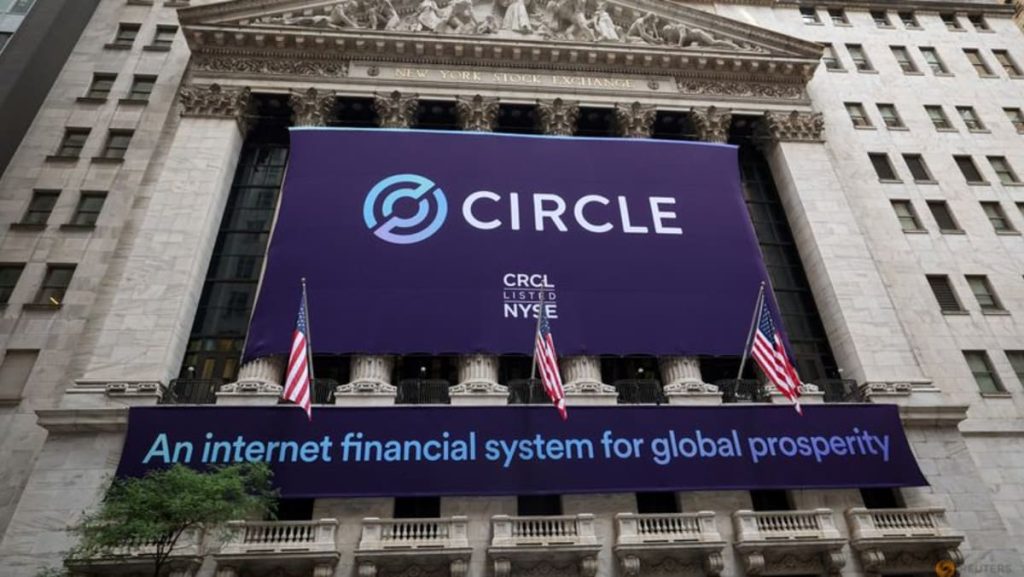As stablecoins take a step toward becoming mainstream, some segments of the U.S. Treasury market, notably securities with short-term maturities, could be vulnerable to volatility as they become more closely tied to the world of cryptocurrency.
Congress is poised to pass legislation establishing a regulatory framework for stablecoins, expected to help legitimize the dollar-pegged cryptocurrencies which are commonly used by crypto traders to move funds between tokens.
Proponents of the bill argue that clear rules will spur further stablecoin activity, and support a growing sector of buyers of short-term U.S. government debt, or T-bills, that are typically considered cash-equivalent securities. But others worry a larger footprint for a relatively new and more volatile industry could in turn spur volatility in the bills market.
“In the event of a sudden loss of confidence, regulatory pressure, or market rumors, this could trigger large-scale liquidations, potentially depressing Treasury prices and disrupting fixed-income markets,” said Cristiano Ventricelli, vice president and senior analyst of digital assets at Moody’s Ratings.
“A problem in the stablecoin sector could spill over into broader financial markets, affecting institutions holding similar assets or (that) rely on stablecoin liquidity,” he added.
If signed into law, the stablecoin bill would require tokens to be backed by liquid assets – like U.S. dollars and short-term Treasury bills – and monthly disclosures from issuers on the composition of their reserves. That means if stablecoins are expected to grow, issuers will have to purchase more T-bills to back their assets.
The bill could be passed by the Senate as early as next week and could eventually increase the amount of U.S. Treasuries held by stablecoin issuers such as Tether and Circle, the latter of which debuted on the NYSE on Thursday. They together hold $166 billion in U.S. Treasuries, according to a report by Bain & Company’s financial services practice.
The stablecoin market, currently about $247 billion according to crypto data provider CoinGecko, could grow to $2 trillion by 2028 if legislation were to pass, Standard Chartered estimated. U.S. Treasury Secretary Scott Bessent encouraged lawmakers to pass legislation to codify federal rules for stablecoins, arguing that it could lead to a surge in demand for U.S. government debt.
Currently, there are about $29 trillion in Treasury securities outstanding, of which $6 trillion are bills.
RED FLAGS
In an April research note, JP Morgan analysts estimated that stablecoin issuers could become the third-largest buyer of Treasury bills in the coming years.
That raises red flags for some, who worry that would lead to closer ties between the crypto ecosystem and the traditional financial world.
The Treasury Borrowing Advisory Committee, a group of banks and investors that advise the government on its funding, said in a study in April that growth of the stablecoin market at the expense of bank deposits could reduce banks’ demand for U.S. Treasuries, as well as have an impact on credit growth.
“If (stablecoin issuers) have to move those Treasuries quickly, or the market demands that, it could create some credit crunches there,” said Mark Hays, associate director for cryptocurrency and financial technology at Americans for Financial Reform. Hays said this assumes that stablecoins become more widely used after legislation passes.
Money market funds, which invest in short-term debt, could be impacted. Money market expert Pete Crane, president of Crane Data, said money funds are watching stablecoin closely but the size of the market would have to become significantly bigger to create concerns over financial stability.
“Treasury bills are normally so short (in maturity) that people don’t concern themselves with price movements, but of course in case of a rapid liquidation the price is going to go down,” he said.
Issues with stablecoins have not so far been large enough to cause systemic problems but the calculus could shift if federal legislation were to spur widespread adoption.
In 2022, a meltdown in the crypto markets sent Tether’s stablecoin below its dollar peg, which caused no impact on the Treasury market. At the time, then-U.S. Treasury Secretary Janet Yellen said stablecoins like Tether didn’t pose a systemic risk to the financial system because they were too small in scale. In 2023, Circle’s USD Coin also lost its dollar peg after the company revealed it held a portion of its reserves at failed Silicon Valley Bank. Circle and Tether declined comment.
POTENTIAL UPLIFT TO MARKET
Still, some argue that there could be benefits from increasing demand for government debt.
“If we pass stablecoin legislation, dollars will be exported around the world, which will extend the strength of the dollar as the world’s reserve currency,” said Matt Hougan, chief investment officer at Bitwise Asset Management, a crypto asset manager.
Roger Hallam, global head of rates at Vanguard, said higher demand for short-term government debt instruments could incentivize the Treasury Department to increase T-bill issuance, rather than long-dated debt, to cover its deficit funding need.
Yields of long-dated U.S. debt have been rising recently, partly due to concerns over the country’s fiscal health.
“You could choose to issue more bills to meet that demand, which would relieve some of the tensions we currently see in the market … around the scale of future issues and who’s going to buy all these bonds,” Hallam said.


